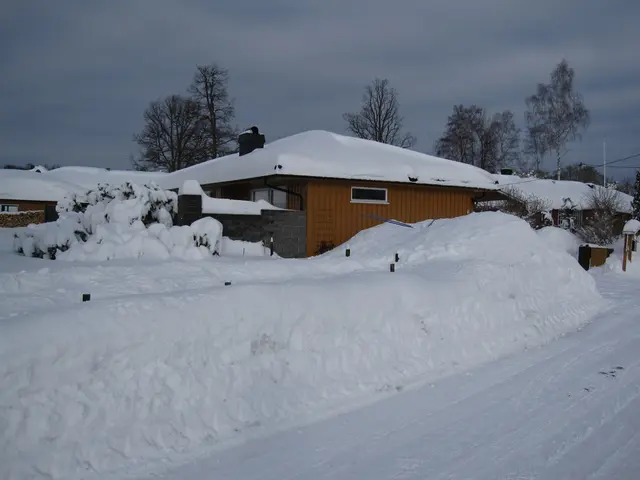Hurricane season commenced. Here's vital information you should be aware of.
Hurricane season kicks off on June 1, and we're looking at another potentially nasty year. Forecasters are warning us about an above-average number of storms brewing in the Atlantic Ocean. According to the National Oceanic and Atmospheric Administration (NOAA), there'll be 13 to 19 named storms between June and November, compared to an average of 14 storms per year from 1991-2020[1].
Warm ocean temperatures are contributing to this surge, as they provide more heat (energy) for the storms to fuel activity[1]. However, experts emphasize that even those living inland should take preparations seriously, as it only takes one storm to make a season active for you[2].
Storms don't just pose hurricane risks; they also bring deadly flood hazards. Even storms that don't reach hurricane status can cause flooding, which is the leading cause of death in hurricanes[2]. Scientists warn that climate change means storms are dumping more water, causing more damage, and extending the risks far from the coast[2].
Unfortunately, weather and climate research have taken a beating this year, with the Trump administration firing hundreds of NOAA employees and proposing hundreds of millions of dollars in funding cuts for the agency[3]. These cuts could undercut improvements in hurricane forecasting, just when we need them the most[3]. The National Weather Service, part of NOAA, has lost more than 500 workers due to these cuts and early retirements[3].
Losses like these could be disastrous, given that forecasters are predicting a busy hurricane season[2]. NOAA says six to 10 of the forecast storms could become hurricanes, with winds of 74 mph or higher, and three to five could intensify into major hurricanes, with winds exceeding 111 mph[4]. Forecasters at Colorado State University and AccuWeather share similar predictions[4].
So, grab your tropical storm or hurricane supplies and keep a weather eye on the skies. As hurricanes can cause significant inland impacts[2], it's essential to stay informed and take precautions, no matter where you live.
References:[1] National Oceanic and Atmospheric Administration, NOAA: 2025 Atlantic Hurricane Season Outlook.[2] National Hurricane Center, Hurricane Preparedness: Inland Flooding.[3] National Public Radio, Trump Administration's Cuts to NASA and NOAA Fear Jeopardize Climate Research.[4] Colorado State University, Tropical Meteorology Project, 2025 Atlantic Hurricane Season Forecast.
- The government's National Oceanic and Atmospheric Administration (NOAA) predicts an above-average number of storms during the 2025 hurricane season, due in part to climate change and warm ocean temperatures.
- As the hurricane season approaches, community members are encouraged to take storm preparations seriously, given that even inland residents can experience inland impacts from hurricanes.
- The general news has reported on proposed funding cuts to NOAA by the government, which experts argue could undercut improvements in hurricane forecasting at a critical time.
- The current state of environmental science indicates that climate change is causing storms to produce more water, resulting in more damage and extending the risks far from the coast.
- Forecasters from Colorado State University and AccuWeather have joined NOAA in predicting a busy hurricane season, with several storms potentially intensifying into major hurricanes.





